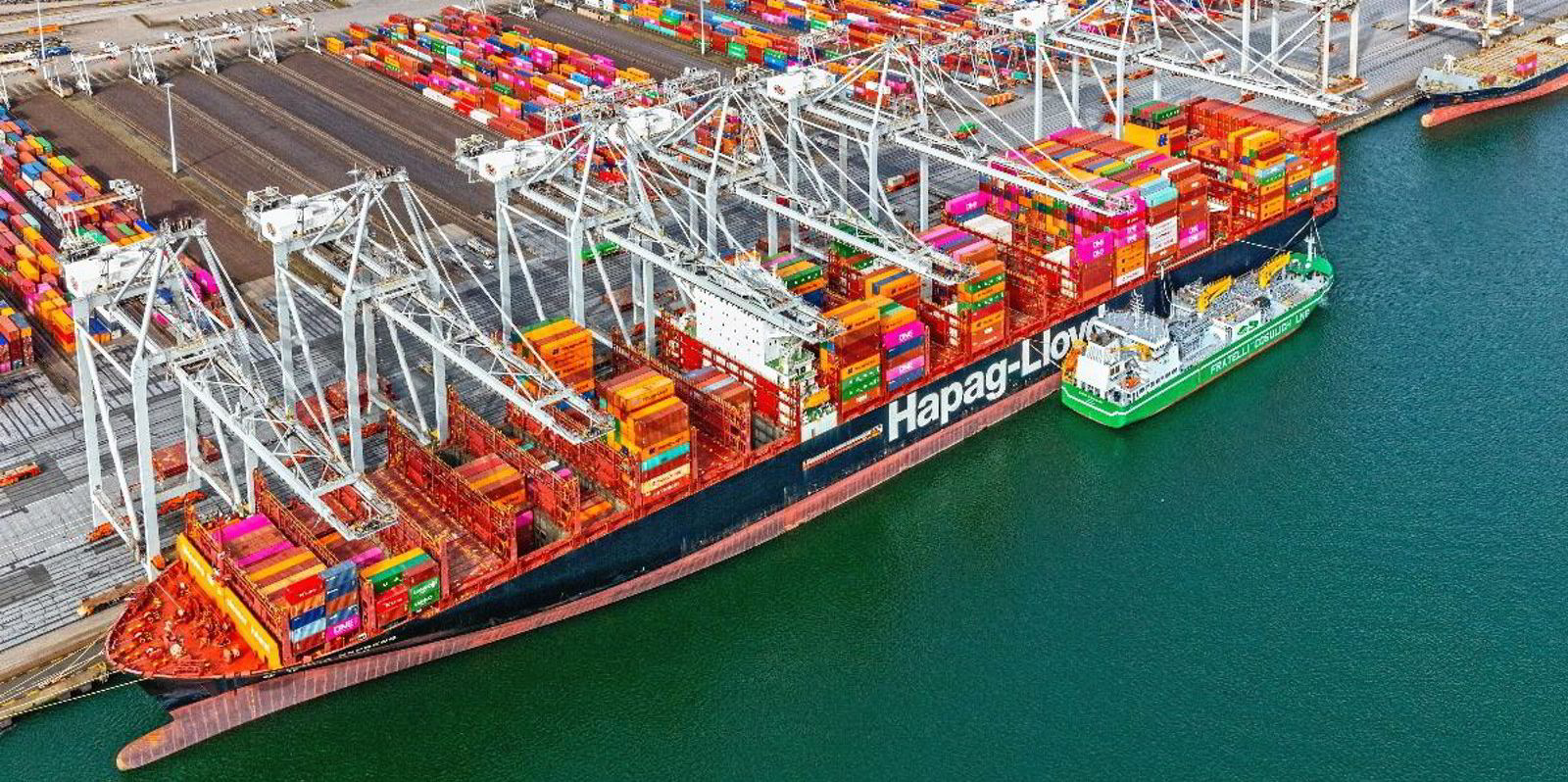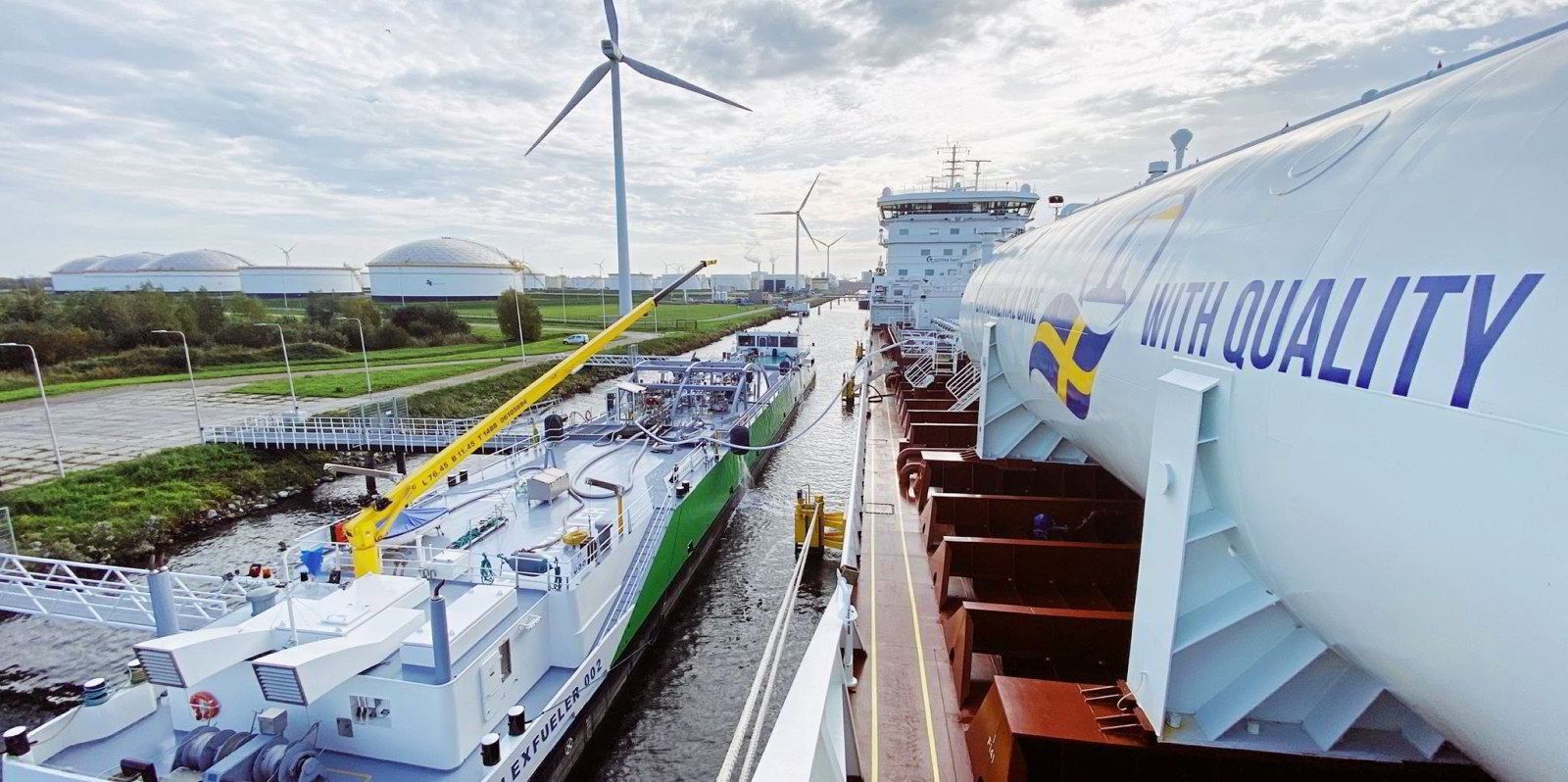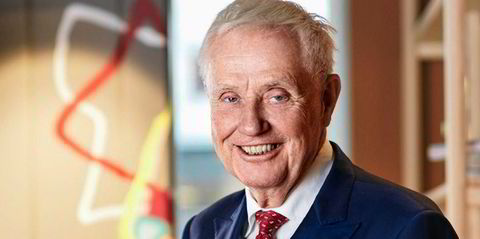Hapag-Lloyd has taken on its first volumes of bio-LNG bunkers in what the suppliers are claiming is the largest ship-to-ship supply of the fuel to date.
Dutch bunker supplier Titan Clean Fuels and commodities trader STX Group said they supplied 2,200 tonnes of bio-LNG or liquefied bio-methane to Hapag-Lloyd’s 15,000-teu container ship Brussels Express (built 2014) in the Port of Rotterdam.
The volumes were supplied by Titan’s chartered LNG bunker vessel, the 8,200-cbm Alice Cosulich (built 2023).
“This transaction marks Hapag-Lloyd’s entry into using liquefied bio-methane as sustainable shipping fuel, representing the largest ship-to-ship bunkering operation known to date,” Titan and STX said.
The two fuel suppliers said they collaborated to liquefy, store and deliver mass-balanced bio-methane — whereby bio-methane is injected into the gas network and transported to liquefaction plants and LNG terminals using the existing infrastructure — in Zeebrugge, Belgium, which was certified under the European Union directive.
Hapag-Lloyd senior director of fuel purchasing Jan Christensen said: “This pioneering deal demonstrates that bunkering large quantities of liquefied bio-methane is possible and scalable.
“However, there is still more progress required regarding the necessary infrastructure and the regulatory framework.
“For us, bunkering liquefied bio-methane is another measure in our step-by-step approach to further decarbonise our operations to reach our goal of becoming net zero by 2045.”
Titan director of renewable fuels Caspar Gooren said: “We have been encouraged by the demand for liquefied bio-methane so far, and this major bunkering represents a significant step in shipping’s clean fuels transition.
“Titan recognises the LNG pathway via liquefied bio-methane and renewable e-methane as a practical, sustainable and cost-effective route to net zero shipping emissions available today.”
STX managing partner of renewable gas Sead Keric said: “This transaction is a proof of how liquefied bio-methane can be a powerful tool on the path to a lower-carbon transport sector.”
- Bio-LNG is considered nearly carbon-neutral because it is produced from organic waste flows, such as organic household and industrial waste, manure and sewage sludge.
- Synthetic LNG or e-LNG is renewable when e-methane is produced using renewable electricity and CO2, either from the air or renewable biomass.
- Both are identical to fossil LNG but are considered renewable as their upstream CO2 inputs make them carbon neutral on a well-to-wake basis.





